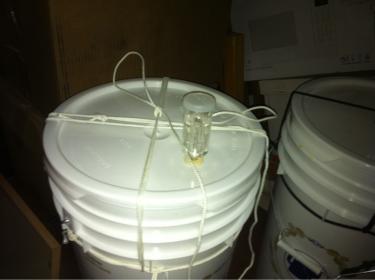So I ordered a couple of 7 gallon HDPE buckets from usplastics and I am using one as a fermenter. I drilled a hole in the lid with a hole saw, and then stuck a airlock in there.
I did my beer thing, and then pitched it into this bucket. A day later, I was feeling kinda sad, b/c there was no activity, and I areated the heck out of it and pitched a lot of yeast.
Then I pryed the top off, and saw I was at full krausen with no activity in the airlock. Obviously, the co2 is escaping and the lid is not secure. Any fixes for this? Is there a special "brewing lid" with a rubber gasket or something I can buy?
In the meantime, am I prone to infection since its obviously not airtight? I'm kinda hoping the co2 flowing out will keep air from coming in at this point.
I did my beer thing, and then pitched it into this bucket. A day later, I was feeling kinda sad, b/c there was no activity, and I areated the heck out of it and pitched a lot of yeast.
Then I pryed the top off, and saw I was at full krausen with no activity in the airlock. Obviously, the co2 is escaping and the lid is not secure. Any fixes for this? Is there a special "brewing lid" with a rubber gasket or something I can buy?
In the meantime, am I prone to infection since its obviously not airtight? I'm kinda hoping the co2 flowing out will keep air from coming in at this point.


 On a side note, I find it funny that people say that all the CO2 will keep the air out of their fermentor but insist that O2 will make its way into an active starter.
On a side note, I find it funny that people say that all the CO2 will keep the air out of their fermentor but insist that O2 will make its way into an active starter.


